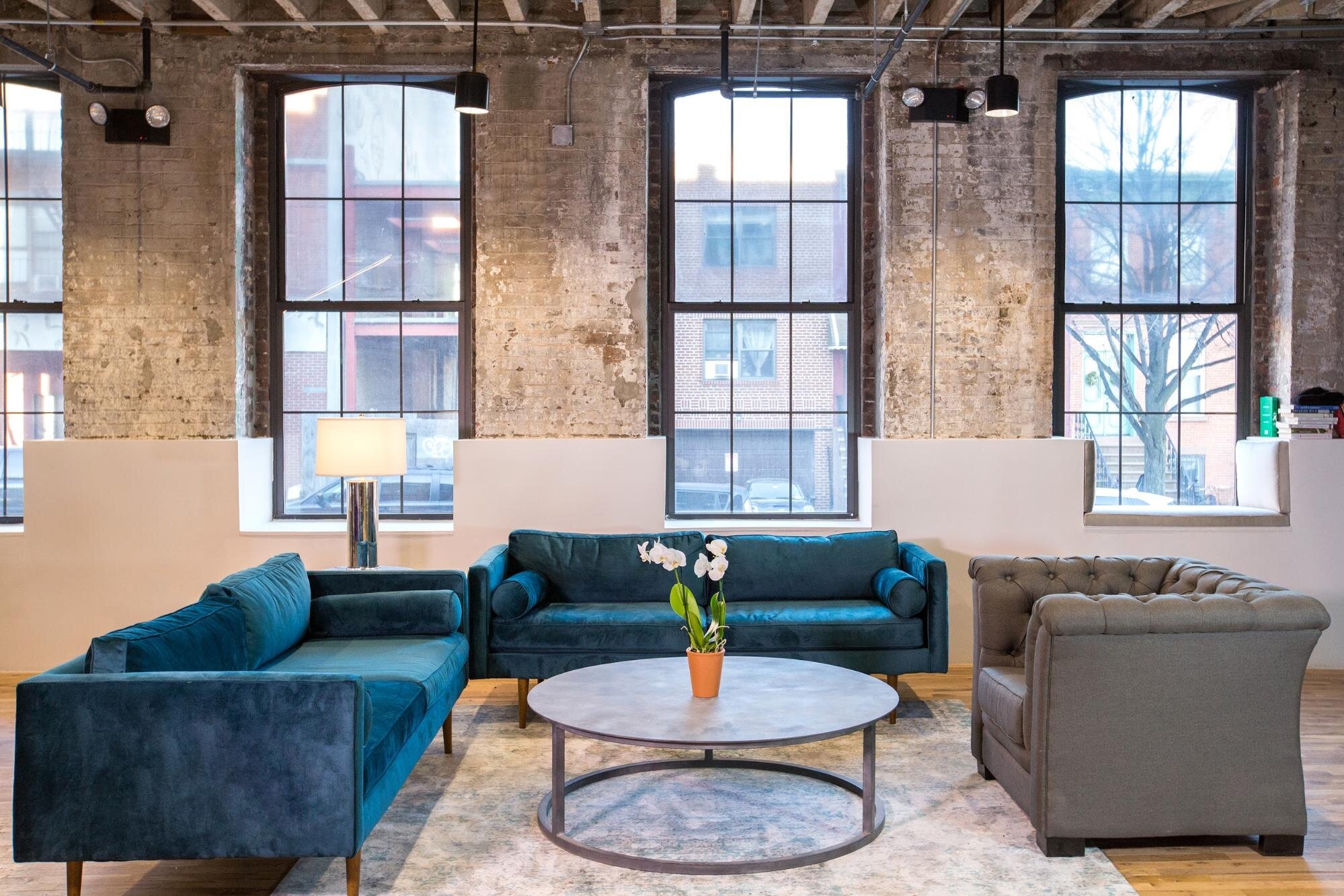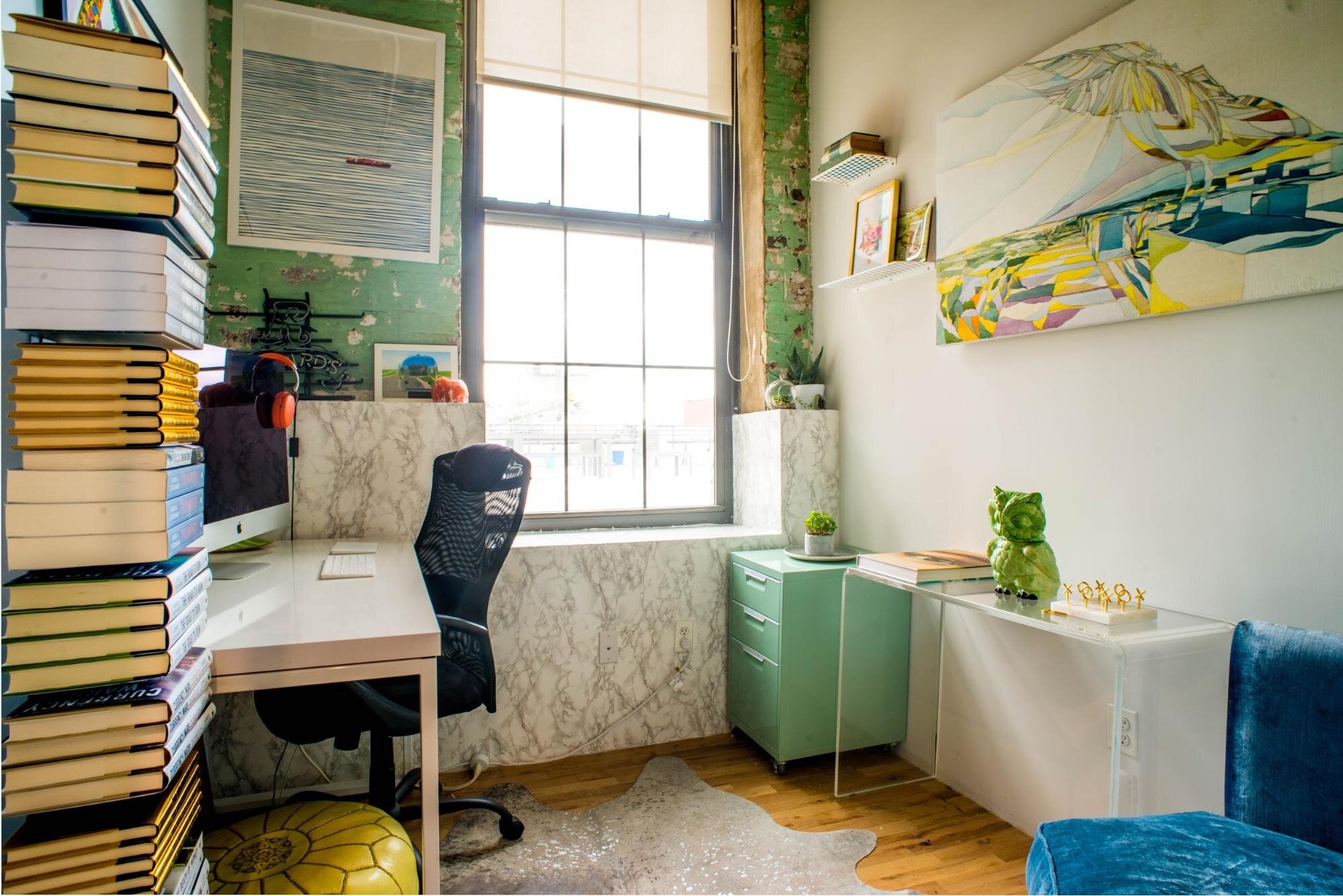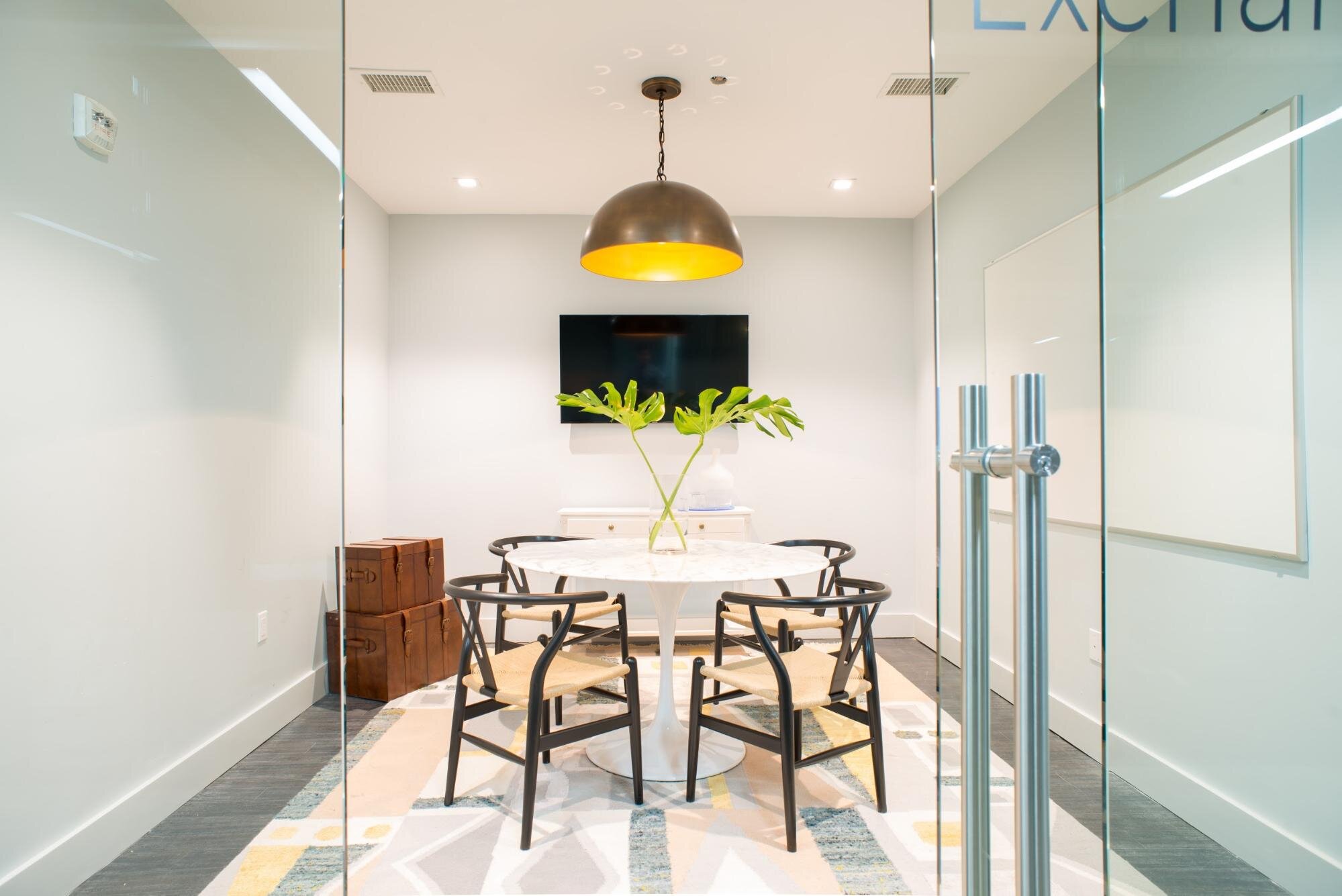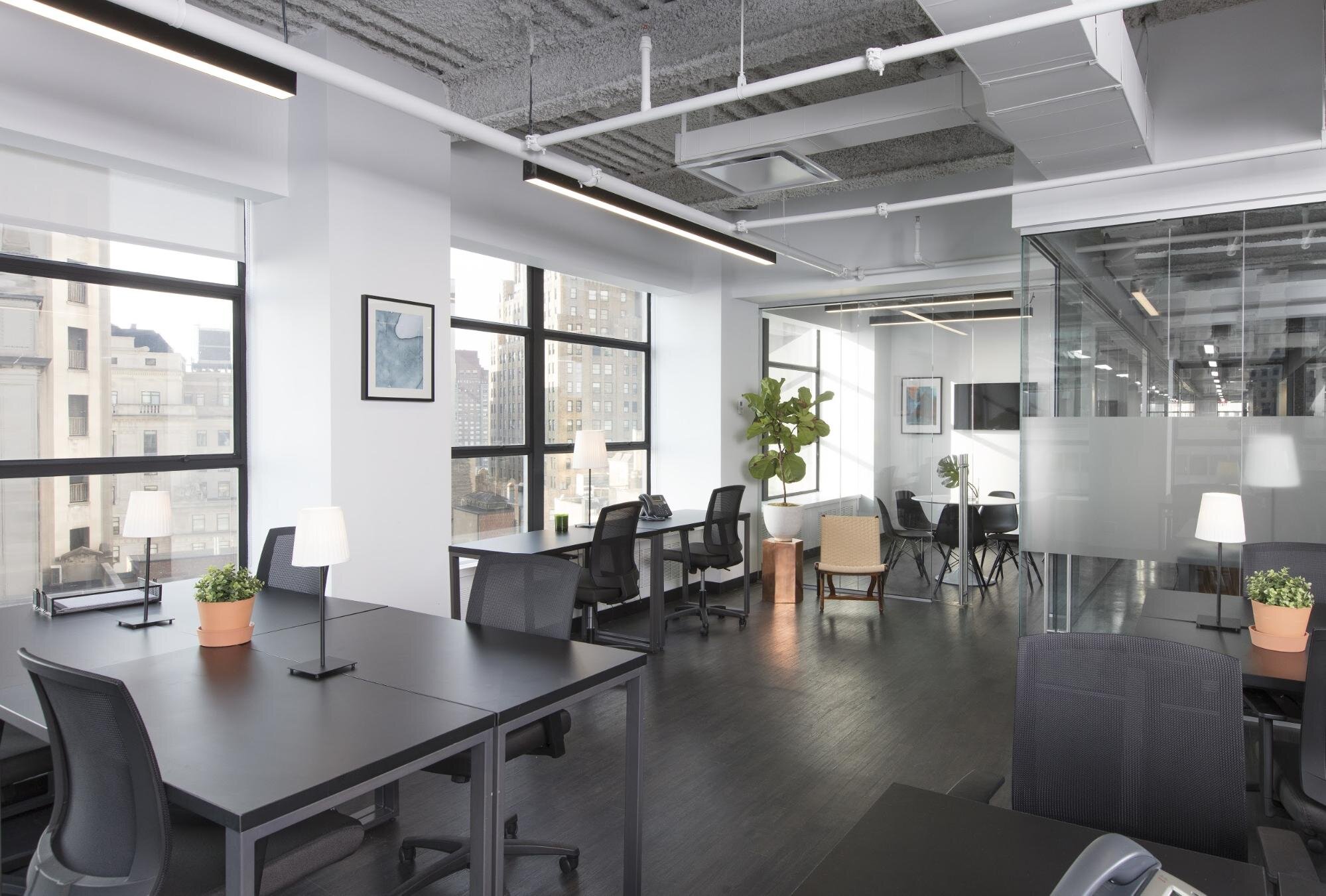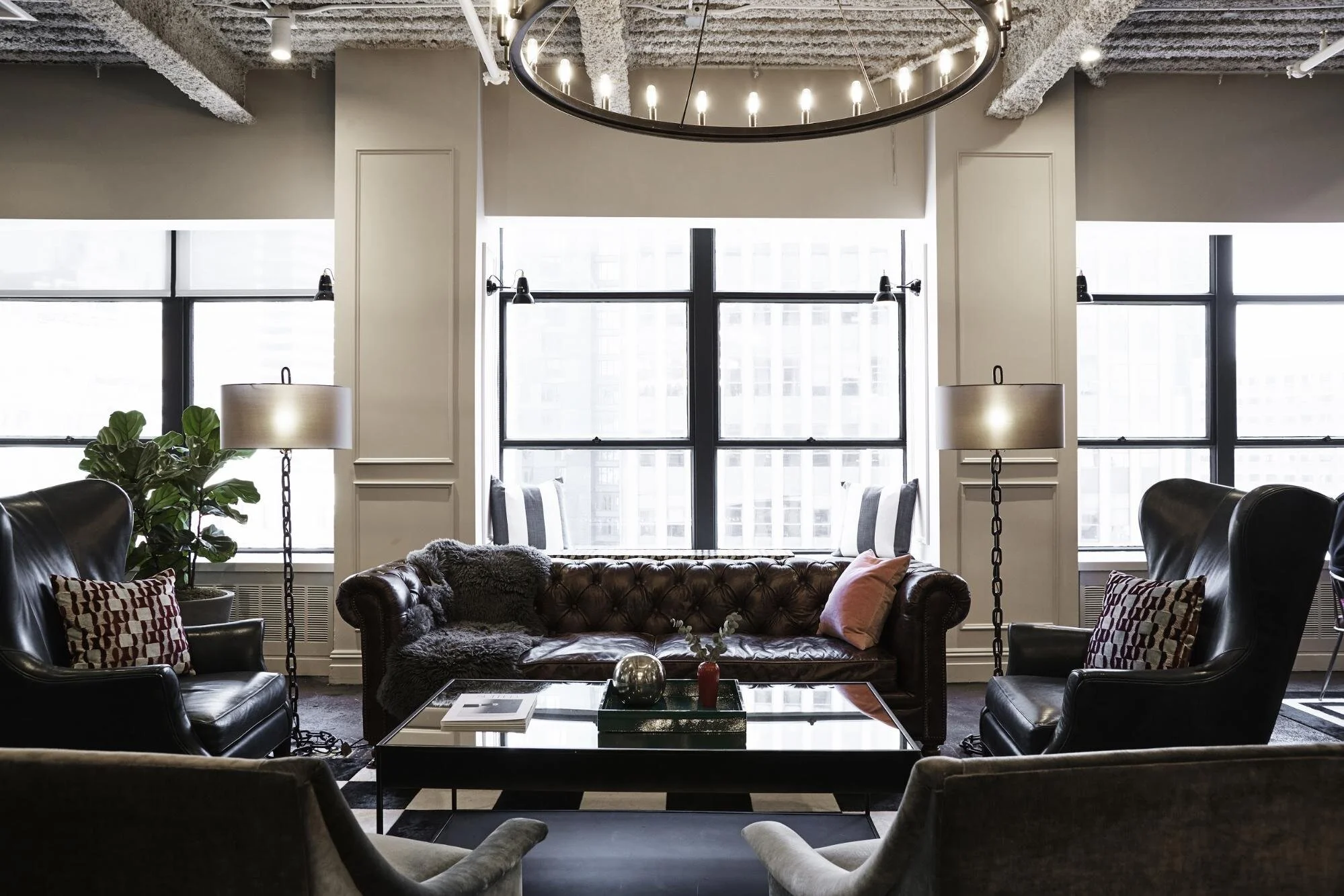By Bond Collective Staff
What’s the ideal ratio of workspace to open space in your office? How can you arrange your business’s work environment for maximum efficiency? Office space planning can help you answer those questions and many more.
In this article, we discuss everything business owners need to know — including definitions, factors that affect the final arrangement, and tips for success — to get the most out of their office space planning efforts.
What Is Office Space Planning?
While there’s no formal definition of office space planning, it’s not a hard concept to understand.
Office space planning is the process of organizing furniture and function in such a way so as to maximize space and improve the efficiency and productivity of the employees who occupy it.
Another, simpler definition of office space planning — that still conveys the same general meaning — is using different methods to set up your work environment for optimized space usage.
Designing office space for maximum efficiency is especially important for businesses that experience periods of high growth. Without an effective layout, employee productivity, efficiency, and creativity can falter.
Factors That Affect Office Space Planning
1) Budget
The cost of office space planning is always a consideration. Sure, you could go all out, spare no expense, and refurb your business’s workspace from top to bottom.
In some cases, that may be necessary. In most cases, though, your business will be better served by setting a budget and sticking to it.
2) Available Space
Available space is one of the major concerns when office space planning.
Take into account the total square footage and then examine how your business allocates it. Is there a better way to arrange things?
3) Capacity
Capacity — the number of people your space accommodates comfortably — is another important variable to consider when planning to rearrange your office.
Combined with your business’s available space, capacity sets the tone for all the decisions that follow.
If you don’t know exactly how many people you want your work environment to include, you can’t properly plan an effective arrangement.
4) Desired Concept
There are many concepts available for your office space planning needs.
Your team may be best served by one of these options:
Open office floor plans
Activity-based workspaces
Desk neighborhoods
Individual workstations
Do a bit of research and decide on the concept that’s the most effective for your business.
5) Demand
Before getting too far into your office space planning, talk to your team to find out if they need a specific type of area that they don’t currently have (or can’t create from existing infrastructure).
Doing so will ensure that any changes you make will support the way your employees want to work.
6) Fixed Features
The fixed features in the building around you will dramatically affect your office layout and functionality.
Map out and provide space around such elements as:
Fire exits
Doors
Structural components
Bathrooms
Windows
Steps
Entryways
Taking these fixed features into account at the beginning of the process will help you avoid last-minute “improvisations” that may detract from the effectiveness of your layout.
7) Compliance
Workplace governance standards and safety regulations can dramatically influence the options you have for rearranging your workspace.
Compliance is akin to the fixed features of your building — you have very little control of them, but you have to incorporate them into all designs.
Compliance issues involve such considerations as blocking fire exits, installing ground-fault circuit interrupter (GFCI) power outlets in the break room, and providing enough ventilation.
Getting to know the OSHA standards and building code ordinances that apply to your business will help you provide the best work environment for your team and avoid hazards, fines, and lawsuits.
Tips For Successful Office Space Planning
1) Retain Some Open Space
It’s very tempting to pack as much furniture as possible into your work area, but doing so is overwhelming — not to mention difficult to navigate.
Whenever possible, retain areas of open space so your team members have easy access to other parts of the office and can gather and talk with their coworkers.
2) Carve Out Quiet Areas
When conducting office space planning for your business, think in terms of zones of specific types of work.
Quiet areas are one of the most important zones your business can create within its larger workspace. Do your best to locate said quiet areas as far from the hustle and bustle of regular business activity as possible.
3) Set Aside Collaboration Space
The other essential work zone to consider when office space planning is collaboration.
A big part of the way your business operates successfully depends on groups of people working together. As such, you want to set aside plenty of space for that activity.
As we mentioned in the previous section, keep the collaboration space and the quiet area as far apart as possible so that the noise and activity from the former don’t disturb the peace and quiet of the latter.
4) Pay Attention To Light
Natural light in your workspaces is always best, but it’s not always possible to arrange things so that everyone is close to a window.
If moving things around so that your entire office benefits from natural light, try adding an adjustable-wavelength lamp to each workstation as a supplement to your current lighting. That way, your team members can customize the illumination to stimulate their productivity.
Need more information on lighting for your office layout? Check out these articles from the Bond Collective blog:
Office Lighting: Everything You Need To Know For Your Office Space
9 Office Design Tips From The Design Team At Bond Collective
5) Harness The Power Of Plants
One of the easiest ways to inspire productivity in the final stages of office space planning is to harness the power of plants.
Research shows that teams working in sight of even a single plant are more productive than their plantless counterparts — even in the lean workspaces occupied by entrepreneurs and startups.
If you’ve got a brown thumb instead of a green thumb, keep it simple by arranging a few small plants on the windowsills in your office or clustering them in a drab corner of the room.
For more suggestions on using plants as part of your office space planning, take a few minutes to read these helpful articles from the Bond Collective blog:
6) Bring The Outdoors In
A sterile office space is no fun to work in every day. Instead, make the workspace inspiring by bringing the outdoors in.
Natural accents such as exposed concrete and wood floors, reclaimed wood desktops, and painted steel are simple ways to give your working environment a touch of the world outside.
The different textures and colors also have the added benefit of making team members feel more comfortable. And when employees are more comfortable, they’re more focused, creative, and productive.
Office Spaces Done Right
If you want to maximize the benefits of your work environment without the stress, strain, and expense of doing it yourself, partner with Bond Collective for office space planning done right.
Each of our shared working environments incorporates inspiring design elements such as natural light, open floor plans, tasteful and professional decor, and multipurpose workspaces.
At Bond Collective, the benefits don’t stop with the office space.
In addition to our unique work settings, members also enjoy amenities, including:
Daily on-site cleaning
Guest reception and greeting
Private-label mail service
Daily on-site cleaning
Lightning-fast Wi-Fi
Concession food market
Conference rooms
Black-and-white printing
Networking and curated events
24-hour access
Bike storage
And much more
If you’re looking for a working environment that is sure to increase your team’s happiness and productivity, skip the DIY office space and become a member of Bond Collective.
Visit any one of Bond Collective’s many locations in the United States, including workspaces in California, New York, Pennsylvania, Washington D.C., Illinois, Tennessee, and Texas. Or call us today to find out more about everything we have to offer.
Then take advantage of our coworking spaces, dedicated desks, and private offices to suit all your business needs.
To get started or to learn more about the advantages of coworking spaces for digital nomads, remote workers, and businesses of all types and sizes, visit BondCollective.com today.
